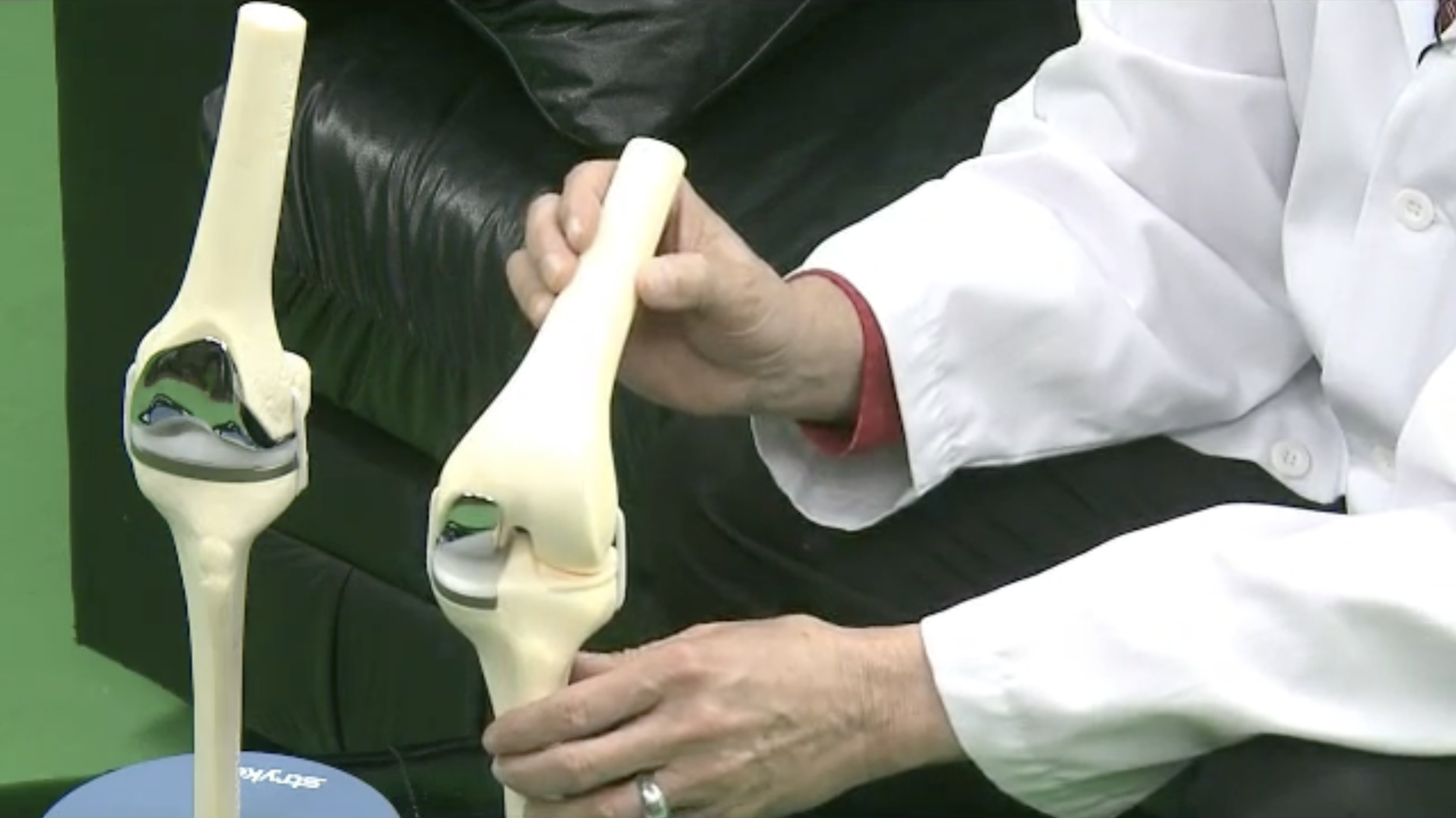UKA
May 25, 2022
Hello, and welcome to Yuma Health and Happenings. I’m Dr. Ron Clark, Orthopedic Surgeon and founder of The Bone and Joint Center of Yuma. Today, I want to talk about the knee with its amazing form and functions. We’ll also discuss what happens when the knee stops performing those functions due to osteoarthritis, as well as treatments to help those with osteoarthritis.
Anatomy of the Knee
The knee is a special joint where the thigh bone, called the femur, and a lower leg bone, called the tibia, connect. The knee joint can be compared to a rocking chair that moves back and forth to allow for bending and straightening. This joint consists of bone and is covered by a softer tissue known as cartilage, which cushions and lubricates the bones during movement.
Osteoarthritis
Osteoarthritis occurs when this protective cartilage on the ends of your bones wears down; therefore, it is sometimes called “wear and tear” arthritis. Osteoarthritis symptoms often develop slowly and worsen over time, typically after years of constant motion and pressure in the joints. As the cartilage wears away, the joint becomes more and more painful and difficult to move.
You might be thinking, “If this is due to a normal wear and tear condition, is this something I simply have to live with or are there treatment options?” The good news is that there are numerous treatment options for osteoarthritis.
Partial Knee Replacement
Most people have heard about a total knee replacement for those with knee arthritis. For those with knee arthritis, there is also another option called a partial knee replacement that can be extremely successful, especially if only one part of the knee is worn out. Partial knee replacements are also called unicompartmental knee arthroplasties, or UKAs.
A partial knee replacement does not mean that the surgeon removes the entire knee. In truth, your surgeon only removes the damaged bone and cartilage at the ends of the bones in the knee joint. They then replace them with plastic and metal devices called prostheses, leaving the healthy bone and cartilage in place. This is different than a total knee replacement, in which all parts of the knee surface are replaced with implants.
Partial knee replacement is a fairly routine procedure and has been in use for over 30 years, with more than 30,000 surgeries performed every year in the United States. The surgical incision for a partial knee replacement is about half the size of a total knee incision, only about 3 to 5 inches in length. The partial procedure also removes less tissue from both the thigh bone and the shin bone.
There are many advantages for partial knee replacements including
- Decreased joint pain
- Preventing or delaying total joint implant
- Increased mobility
- Increased quality of life and activity
Many patients are able to walk without a cane or walker within 3 to 4 weeks after surgery, and you may need physical therapy for up to 4 to 6 months.
Lifestyle Changes After Partial Knee Replacement Surgery
Will your lifestyle change after healing from a partial knee replacement? The answer is yes. You will likely gain greater mobility and experience minimal to no pain. Most forms of exercise can be resumed or started after surgery, including walking, swimming, and biking. You’ll also be able to participate in other activities, like dancing, pickleball, and easy snow skiing. However, you should avoid high-impact activities such as jogging, running, or jumping activities.
The decision to have surgery is sometimes difficult because there are risks associated with every surgical procedure. Fortunately, complications rarely occur, but they can be serious and could even create serious problems for an individual. Problems that occur in less than 4% of individuals include:
- Infection
- Blood clots
- Implant breakage
- Implant misplacement
- Wear
- Loosening
- Dislocation of the joint or the implants.
It is my hope that I have helped you understand the basics of knee osteoarthritis and some of the options for treatment, allowing you to make your own decision regarding partial knee replacement surgery. To find out if a partial knee replacement is the right option for you, stop into the Yuma Bone and Joint Center office.